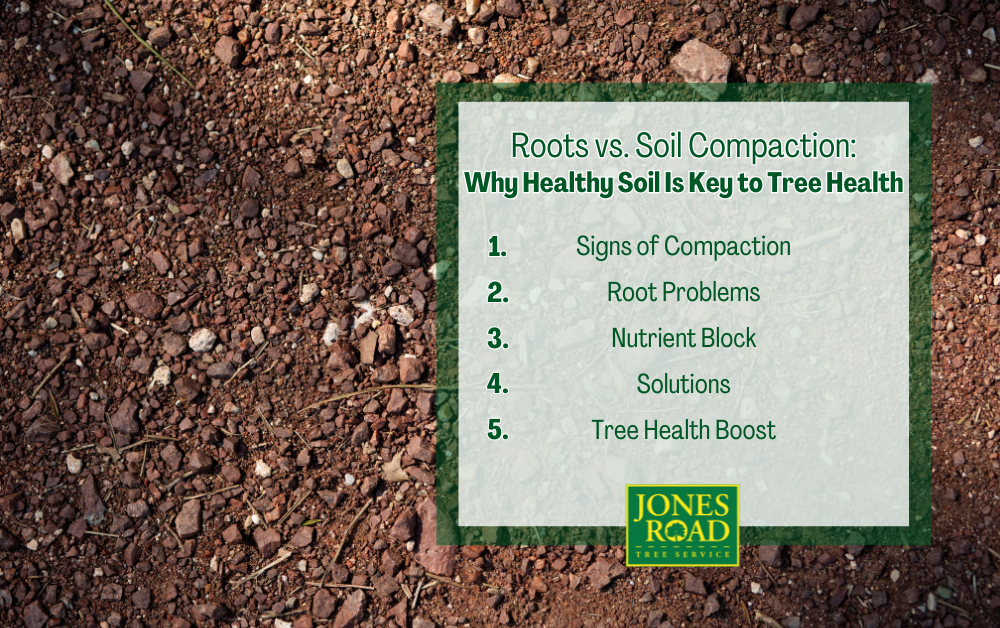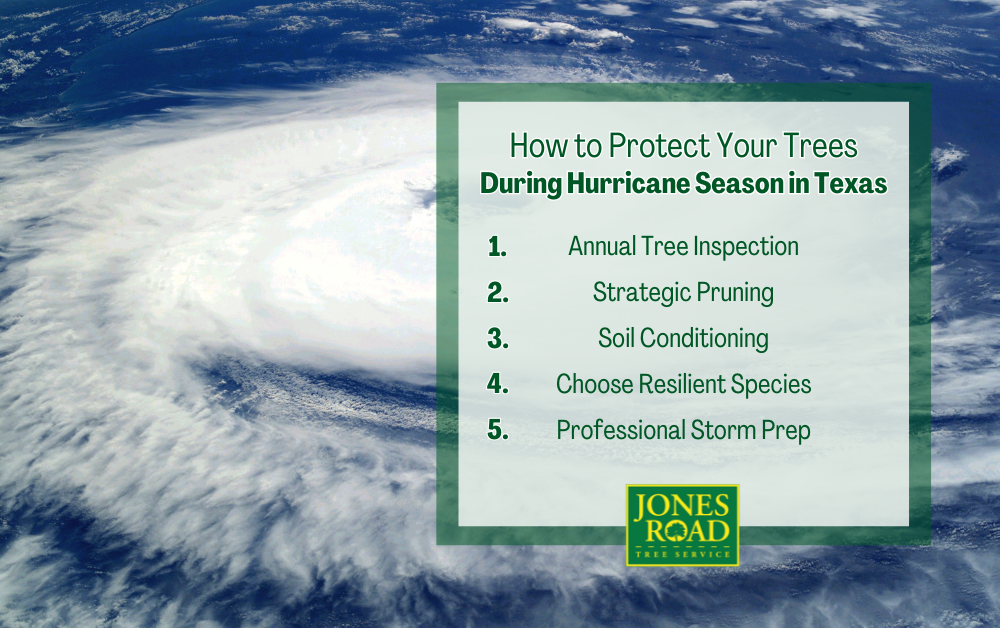When people think about caring for their trees, they usually imagine pruning branches, watering during hot weather, or fertilizing in the spring. While these are all important, one critical factor often goes unnoticed: the soil beneath your feet. Healthy soil is the foundation of strong, resilient trees. When soil becomes compacted, it silently strangles the roots and puts your trees at risk.
Let’s explore why soil health matters, how compaction impacts tree roots, and what you can do to restore and protect your trees.
The Connection Between Soil and Tree Health
Soil as the Lifeline of Trees
Soil isn’t just dirt—it’s a living system that supports trees. It provides water, nutrients, and oxygen while anchoring roots. Healthy soil has pore spaces that allow air and water to flow freely.
What Healthy Soil Looks Like
In its ideal state, soil has structure: a balance of minerals, organic matter, microbes, and open space. This structure allows trees to grow deep roots that can withstand droughts, storms, and stress.
Urban Challenges for Tree Health
Unfortunately, most urban and suburban environments aren’t ideal. Heavy landscaping, construction, and everyday traffic compress soil over time. Unlike trees in natural forests, landscape trees often struggle with compacted ground.
What Is Soil Compaction?
Definition and Causes
Soil compaction occurs when soil particles are pressed tightly together, eliminating the pore space that roots depend on. Causes include:
- Heavy equipment or vehicles driving over roots
- Frequent foot traffic in lawns, schools, and HOAs
- Construction and grading
- Over-mulching or piled debris
Signs of Compacted Soil
Compaction is a hidden problem, but there are warning signs:
- Ground feels hard and dense
- Puddles form after rain because water can’t soak in
- Trees show stunted growth, thinning leaves, or bare branches
Why It’s a Silent Threat
Because soil compaction isn’t visible at first, many homeowners don’t realize it’s happening until the tree begins declining. By then, root systems may already be struggling.
How Soil Compaction Impacts Tree Roots
Restricted Oxygen Flow
Roots need oxygen to survive. Compacted soil limits airflow, suffocating roots.
Limited Water Absorption
Instead of soaking into the ground, water pools on the surface. Roots can’t reach it, leaving trees thirsty even after rain.
Nutrient Deficiency
With less pore space, trees struggle to absorb essential minerals, weakening their immune systems.
Shallow Root Development
Compaction forces roots to spread at the surface. This creates poor stability and makes trees more likely to fall during storms.
Increased Susceptibility to Disease and Pests
Stressed trees are natural targets for insects, fungi, and decay. Compaction doesn’t just harm roots—it opens the door to secondary problems.
Solutions for Compacted Soil and Better Tree Health
Air Spading (Professional Technique)
One of the most effective treatments is air spading. Using compressed air, arborists loosen compacted soil without damaging roots. This restores oxygen flow and creates space for water and nutrients.
Deep Root Fertilization
This method injects nutrients directly into the root zone. Combined with air spading, it ensures trees receive the nourishment they need to recover.
Proper Mulching Practices
Mulch is beneficial, but piling it too high creates “mulch volcanoes” that suffocate roots. Keep mulch 2–4 inches deep and away from the trunk.
Controlled Irrigation
Shallow watering encourages shallow roots. Deep, infrequent watering helps trees grow stronger root systems.
Reducing Traffic Over Root Zones
Redirecting foot traffic and avoiding parking or equipment over root areas protects soil from future compaction.
Preventing Soil Compaction in the Future
Soil care isn’t just about fixing problems—it’s about prevention. During construction, plan pathways and avoid heavy equipment near root zones. Homeowners should schedule seasonal tree care, including fertilization and soil inspection, to stay ahead of compaction. Investing in soil health today prevents costly removals tomorrow.
When to Call a Certified Arborist
If your trees show signs of stress—thinning leaves, shallow roots, or poor growth—it’s time to call a professional. Certified arborists have the tools and training to diagnose soil problems and apply solutions like air spading or deep root fertilization safely.
At Jones Road Tree Service, our team includes ISA Certified Arborists with decades of experience. We specialize in tree health services that go beyond quick fixes, focusing on long-term solutions for your landscape.
Protect Your Landscape by Prioritizing Soil and Root Health
Healthy soil is the foundation of tree health. Compacted soil quietly suffocates roots, limiting oxygen, water, and nutrients while leaving trees vulnerable to disease and decline. The good news? With professional care, compacted soil can be treated and prevented.
Call Jones Road Tree Service today to schedule a tree health consultation. Our certified arborists can assess your soil, revive your trees, and keep your landscape thriving for years to come.




